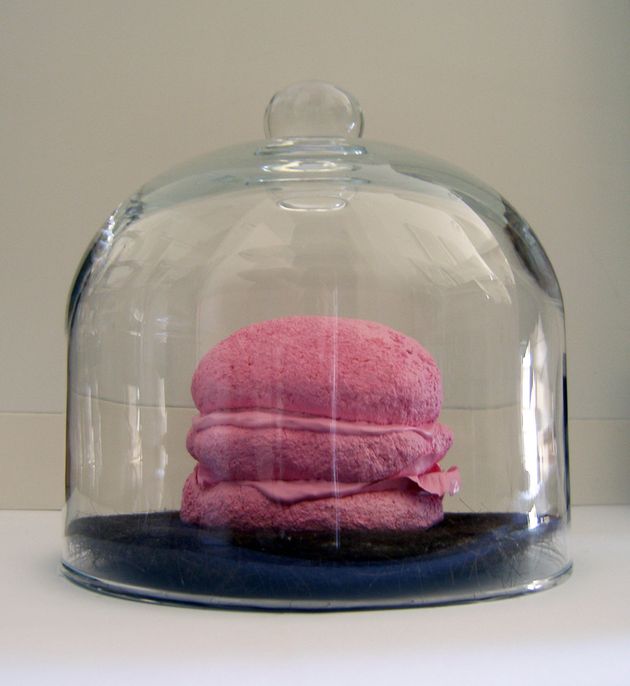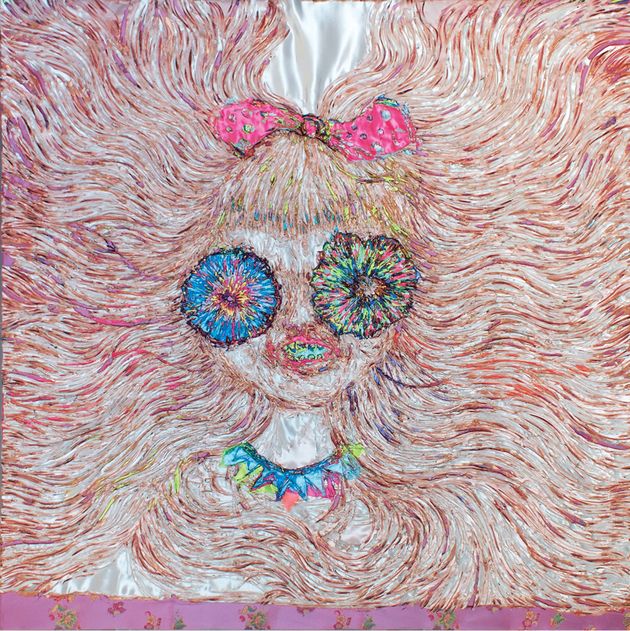Simona Peneva
Kawaii means "cute" in Japanese. The rise of "cute art" in Japanese culture began in 1970 as part of a new style of writing. Many teenage girls began to use mechanical pencils which produce very fine lines, making traditional Japanese writing very different. The girls began to add to the texts small drawings such as hearts, stars and letters of the Latin alphabet. This is how Kawaii art was born. It has quickly spread, not only in Japan but also throughout the world, in the form of children's television series, video games and the popular cartoon character Hello Kitty, which is famous all around the world today.
 This year Michael Parlamas has decided to bring together two cultures in one room, namely Japanese and Greek, precisely through Kawaii. This "cute art" seen on television in the Japanese series "Candy Candy" enchanted him while he was a child. The logic of this art had intrigued him and when he grew up he decided to deal with it professionally. With the assistance of the Japan Foundation and the Japanese Embassy in Greece, he has obtained financial support and has organized an exhibition which includes the works of 26 artists - 13 Greeks and 13 Japanese. It takes place at CAMP: Contemporary Art Meeting Point.
This year Michael Parlamas has decided to bring together two cultures in one room, namely Japanese and Greek, precisely through Kawaii. This "cute art" seen on television in the Japanese series "Candy Candy" enchanted him while he was a child. The logic of this art had intrigued him and when he grew up he decided to deal with it professionally. With the assistance of the Japan Foundation and the Japanese Embassy in Greece, he has obtained financial support and has organized an exhibition which includes the works of 26 artists - 13 Greeks and 13 Japanese. It takes place at CAMP: Contemporary Art Meeting Point.
Michael explains that this "cute art" has become a routine in the world of Japanese. They use the word "Kawaii" for everything they like just as we use the word "cool." For this reason, it means something different to everyone. For some it is a picture which you can hang in the children’s room or something cute and immature. On the other hand, as one of the Japanese artists named Masae thinks, it is a kind of transformation.
 An example of this is the cartoon character Hello Kitty. It is a cat with very big eyes and cute clothes. In fact, there are no such cats and this explains the point of view of the fans of the dark side of Kawaii. "It turns out that, ultimately, the beautiful and the ugly are the same thing since everyone sees it in a different way," says Michael Parlamas. Therefore, the exhibition is divided into two parts.
An example of this is the cartoon character Hello Kitty. It is a cat with very big eyes and cute clothes. In fact, there are no such cats and this explains the point of view of the fans of the dark side of Kawaii. "It turns out that, ultimately, the beautiful and the ugly are the same thing since everyone sees it in a different way," says Michael Parlamas. Therefore, the exhibition is divided into two parts.
On the first floor, visitors can see many paintings in warm colours, mostly pink and light blue. Images of people with big eyes, animal bodies and pink pigs are some of the artists’ works. "Here you can see childish and cute things but through the eyes of a mature person," states Michael Parlamas. Recycled video games are the basis of the works of one of the Japanese sculptures. They create the illusion of soft plush toys and they are in many different shapes and colours such as pink fairy cakes and variegated bears.

While everything on the first floor is cute, bright, tender and childish, the exhibition on the second presents the dark side of Kawaii. There, visitors can see large paintings in dark colours, a video with wolves and bears, and a tent in which neon lights are intertwined. Sounds that resemble a wild animal in the woods are adding to the effect of the dark side of this "cute art". One of the materials used is top satin.
Michael explains that "cute art" is not present only in paintings and on television. "It is part even of philosophy and religion," he says. Another Greek artist who participates in the exhibition is Olympia Tobsidou. She has received a scholarship to study in Japan. Her interest and enthusiasm are expressed in the bright colours of her paintings that resemble animation. The Japanese artist Maiu whose training has just started has selected two of her colourful paintings for the exhibition. Asako Masunai is married to a Greek and in addition to her participation in the exhibition the Greek audience knows her for her illustrations in some newspapers. Nozani Tozhinbara is the artist with some of the most attractive and recognizable paintings. Images of children with huge eyes and of half-human and half-animal creatures attract the customers with their individuality.

In addition to in Japan, "cute art" has great resonance in America. We all know Louis Vuitton’s bags on which, for some time, not the initials of the company but fruits and and foods with eyes had been painted. This idea belonged to Takasi Murakami, a representative of this art form. Gwen Stefani has also released a video album called "Harajuku Lovers", which clearly expresses the style of Kawaii.

"It seems to me that all galleries both in ancient and in modern Greece present only one form of art. And it is too serious. Therefore, I have decided to bring together two cultures in one room and to present Kawaii to the audience. It is because the Greeks and the Japanese have something in common. It may be history but it may be something else," says Michael Parlamas.